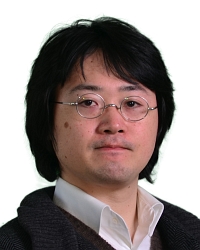TR2023-139
Rateless Deep Graph Joint Source Channel Coding for Holographic-Type Communication
-
- , "Rateless Deep Graph Joint Source Channel Coding for Holographic-Type Communication", IEEE Global Communications Conference (GLOBECOM), DOI: 10.1109/GLOBECOM54140.2023.10437920, December 2023.BibTeX TR2023-139 PDF
- @inproceedings{Fujihashi2023dec,
- author = {Fujihashi, Takuya and Koike-Akino, Toshiaki and Watanabe, Takashi},
- title = {{Rateless Deep Graph Joint Source Channel Coding for Holographic-Type Communication}},
- booktitle = {IEEE Global Communications Conference (GLOBECOM)},
- year = 2023,
- month = dec,
- publisher = {IEEE},
- doi = {10.1109/GLOBECOM54140.2023.10437920},
- issn = {2576-6813},
- isbn = {979-8-3503-1090-0},
- url = {https://www.merl.com/publications/TR2023-139}
- }
- , "Rateless Deep Graph Joint Source Channel Coding for Holographic-Type Communication", IEEE Global Communications Conference (GLOBECOM), DOI: 10.1109/GLOBECOM54140.2023.10437920, December 2023.
-
MERL Contact:
-
Research Areas:
Abstract:
A key challenge in holographic-type communication is transmitting point cloud signals to users across diverse channel quality and bandwidths. Digital based point cloud coding efficiently reduces point cloud traffic. In contrast, the quantization and entropy coding in digital-based schemes causes quality degradation owing to channel quality fluctuations and diversity. This study proposes a novel scheme for point cloud delivery over wireless channels. The proposed scheme consists of a graph auto-encoder (GAE) architecture to compress the point cloud into coded symbols and restore the point cloud from the received symbols. The proposed scheme addresses the quality degradation due to channel quality fluctuations and bandwidth diversity via, the following two steps. First, the coded symbols are directly mapped onto transmission symbols, analog modulation, to ensure that the point cloud quality follows the instantaneous channel quality of each user. Second, a non-uniform dropout is introduced to realize a rateless property in the GAE architecture for gradually improving the point cloud quality according to the available bandwidth. Evaluation results demonstrate that the proposed GAE architecture can yield better point cloud quality than digital-based and analog-based schemes, even when users have varying available bandwidths.
